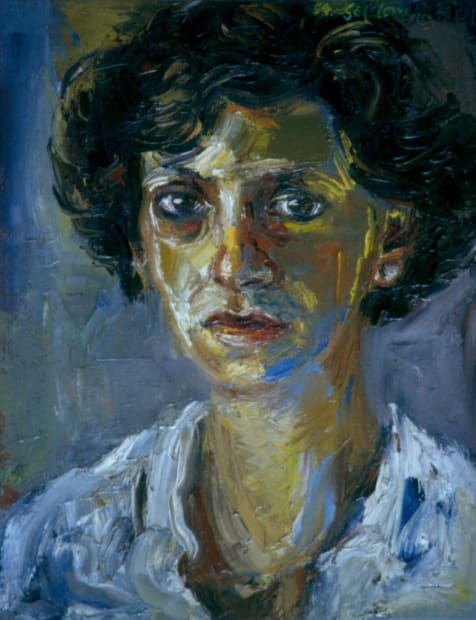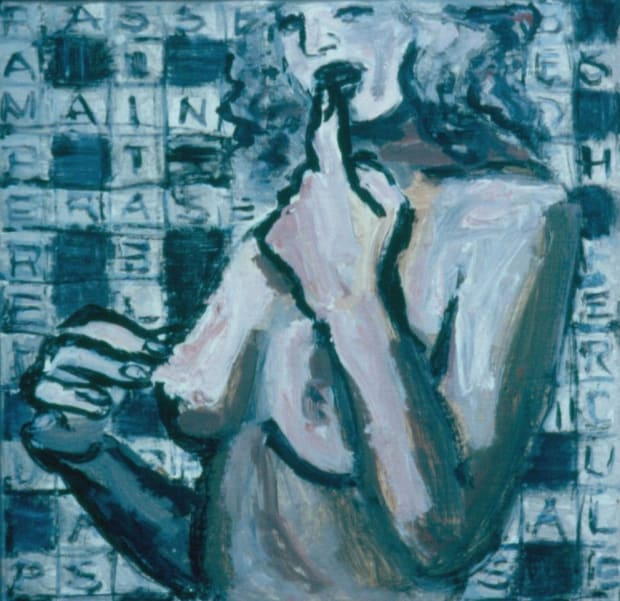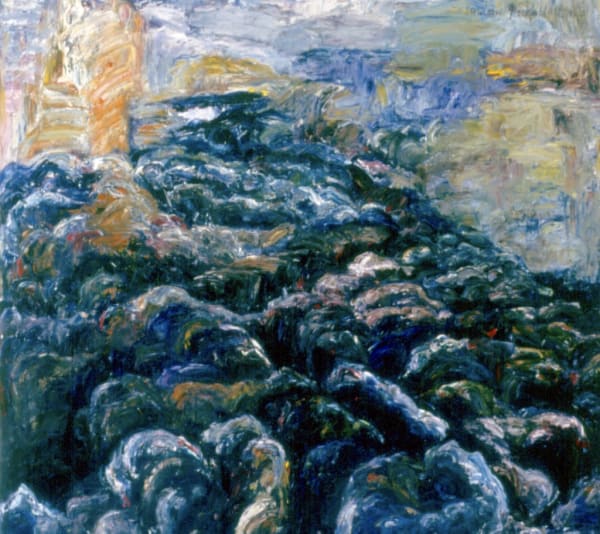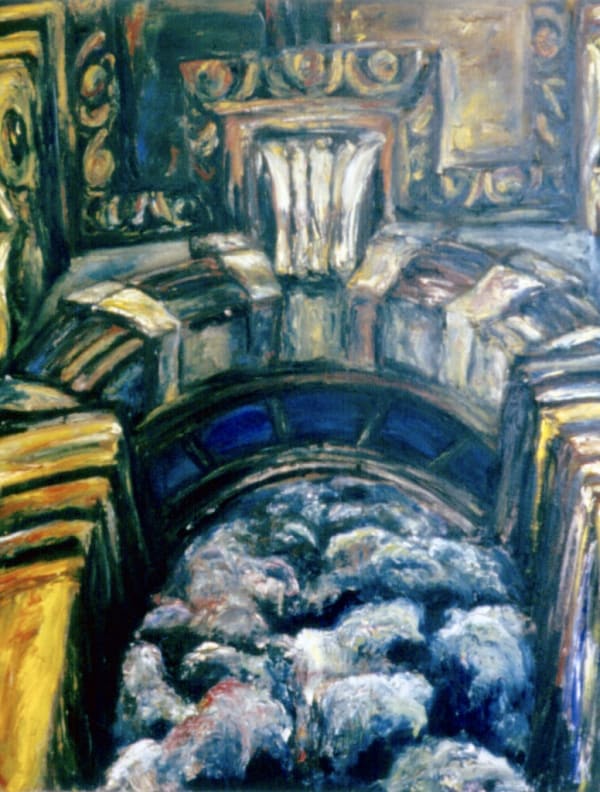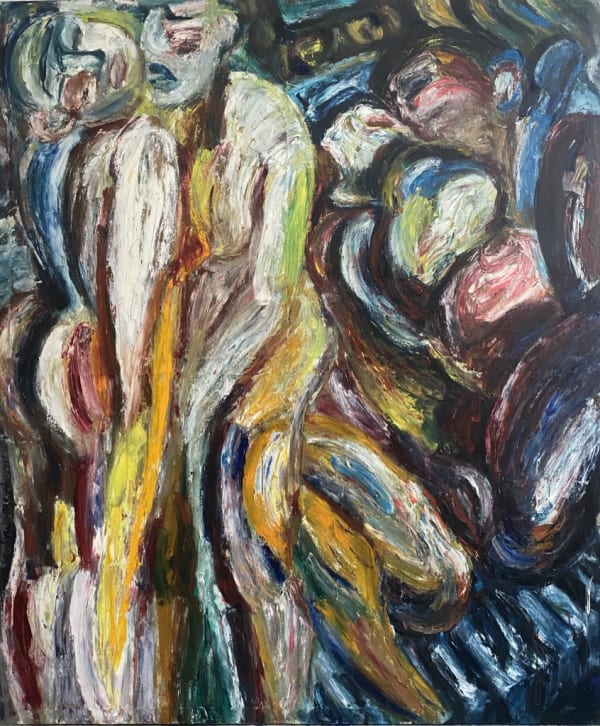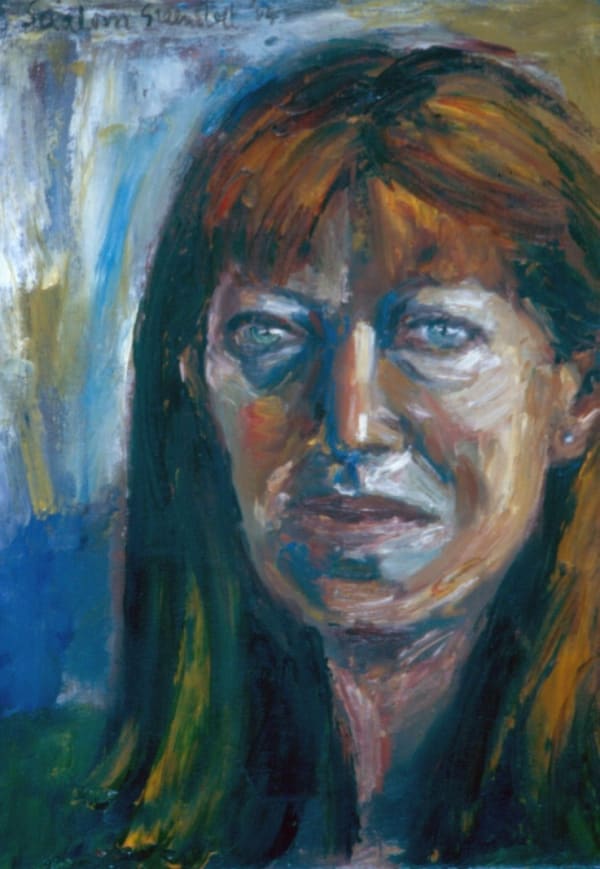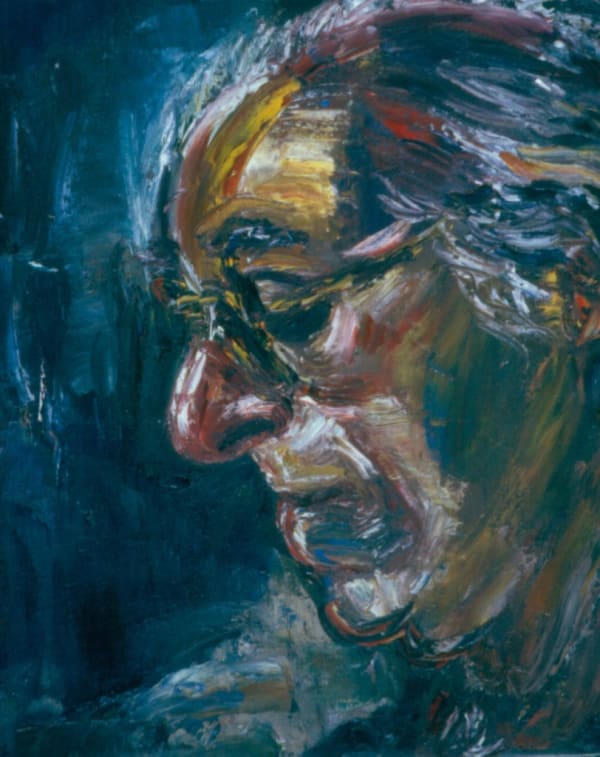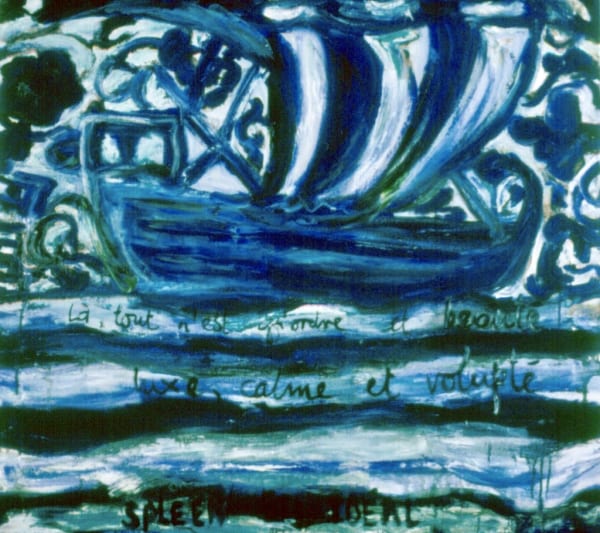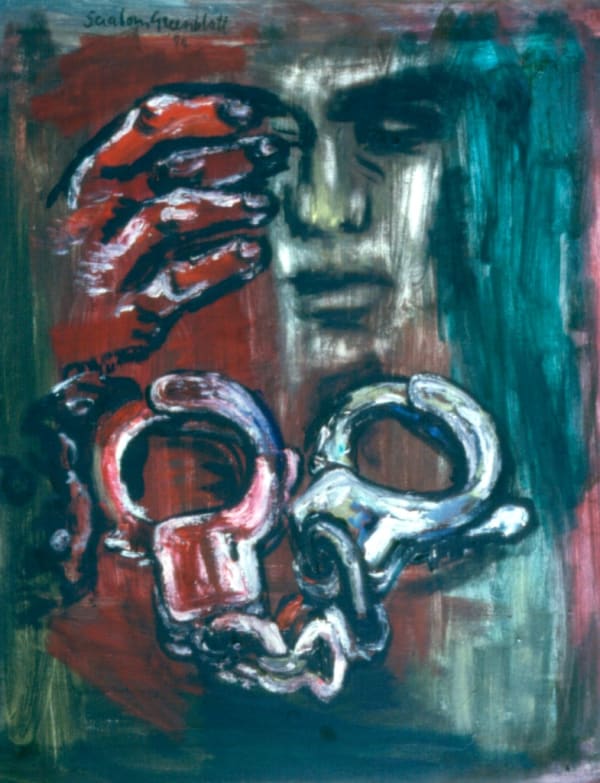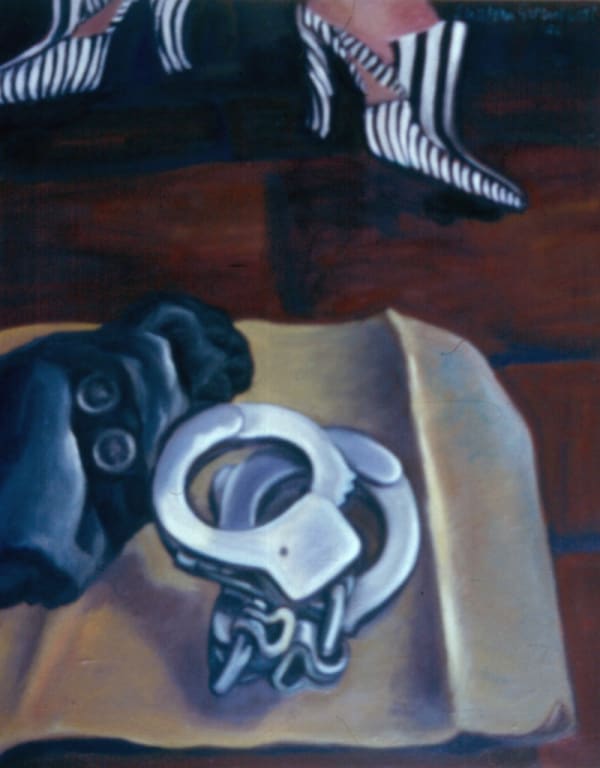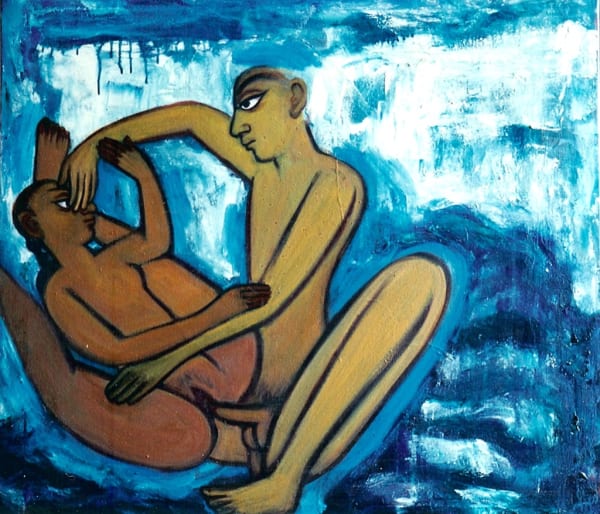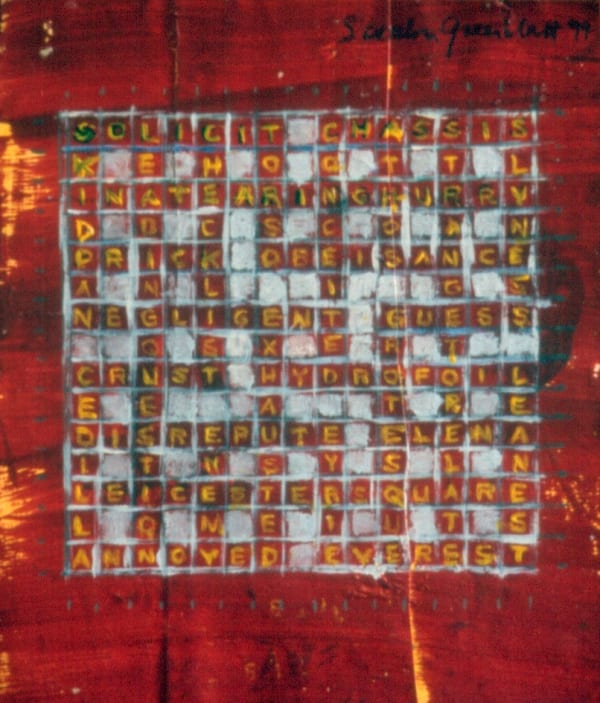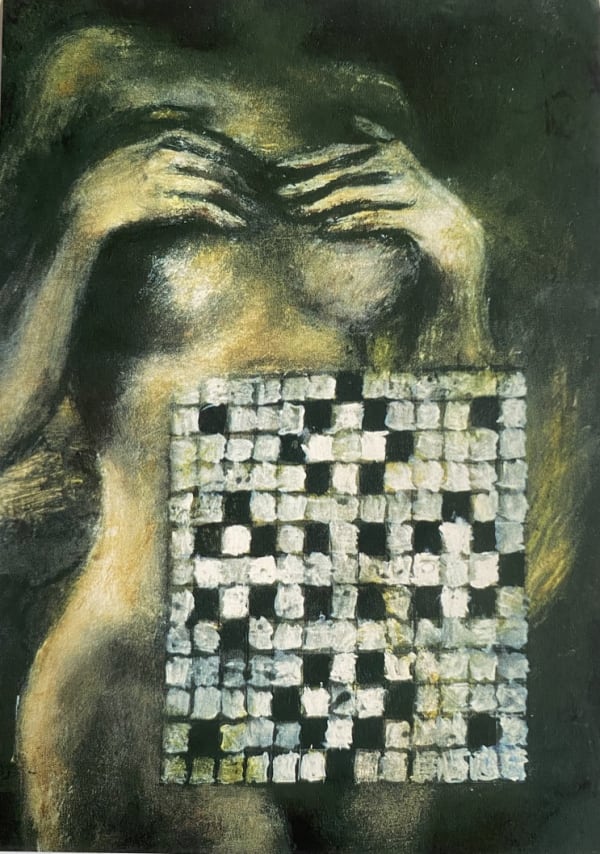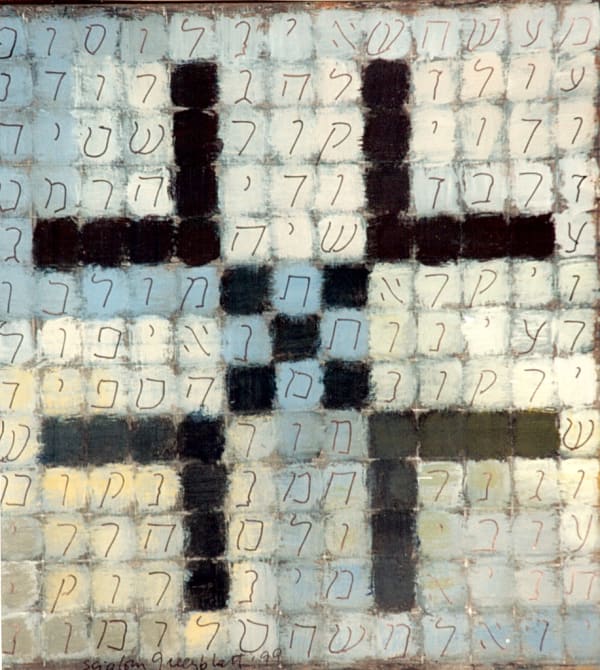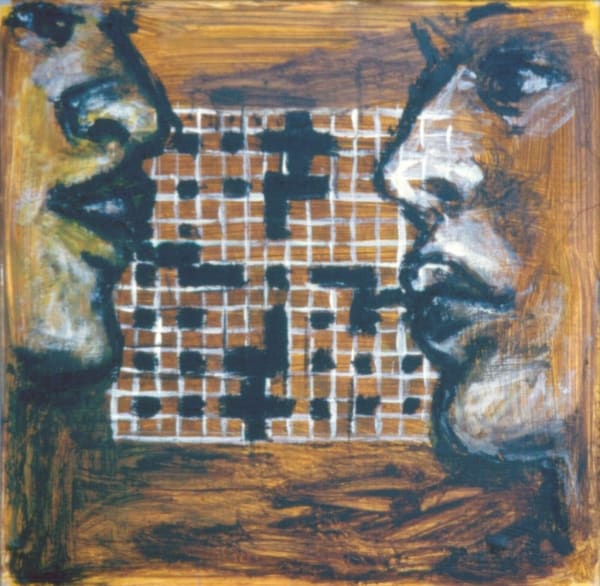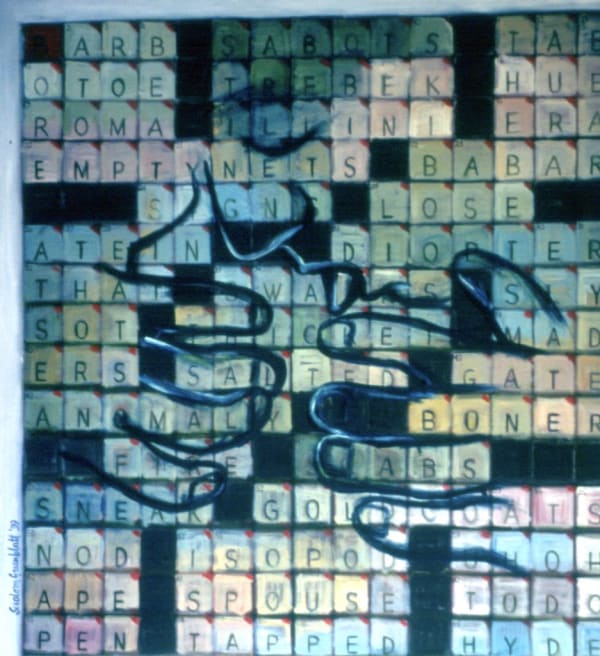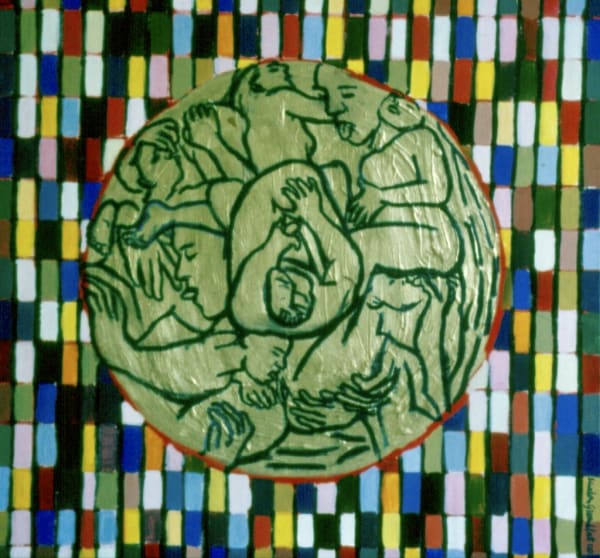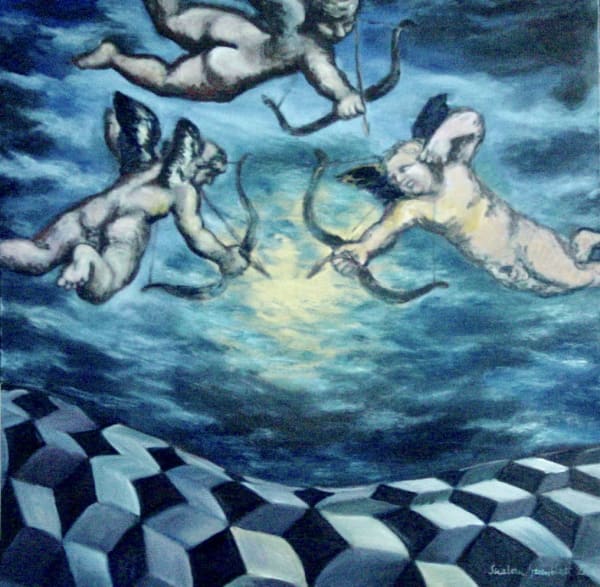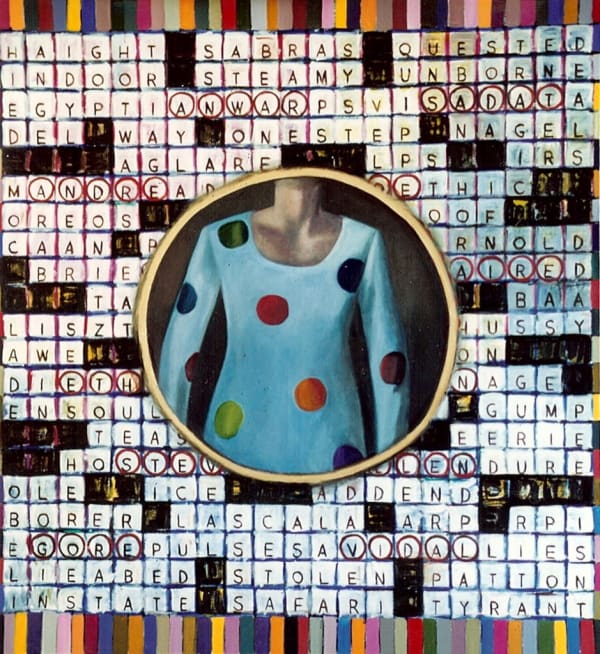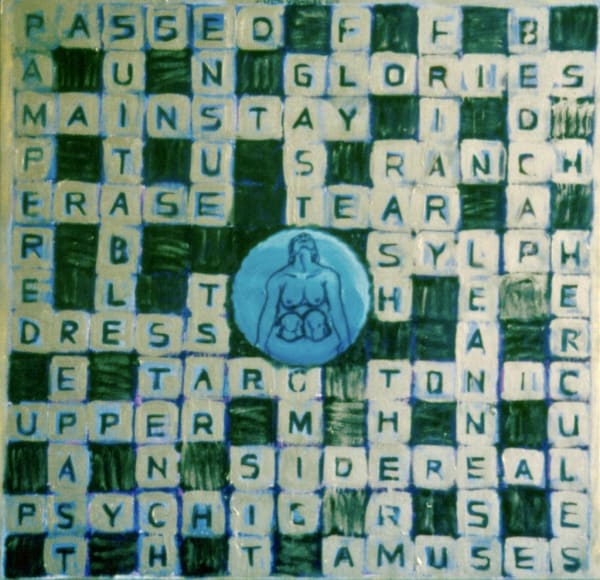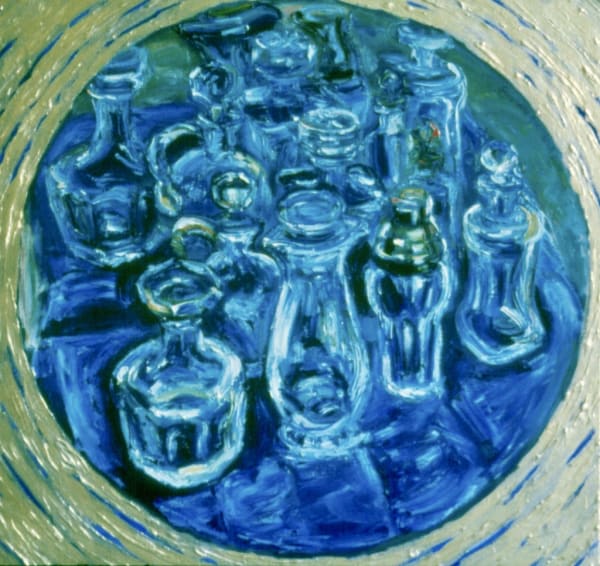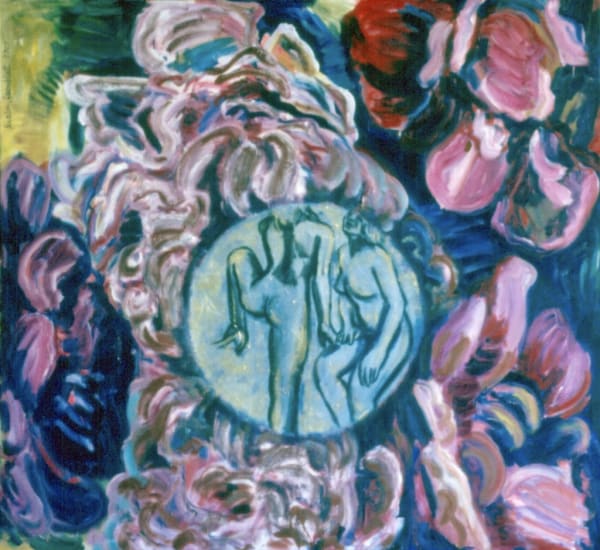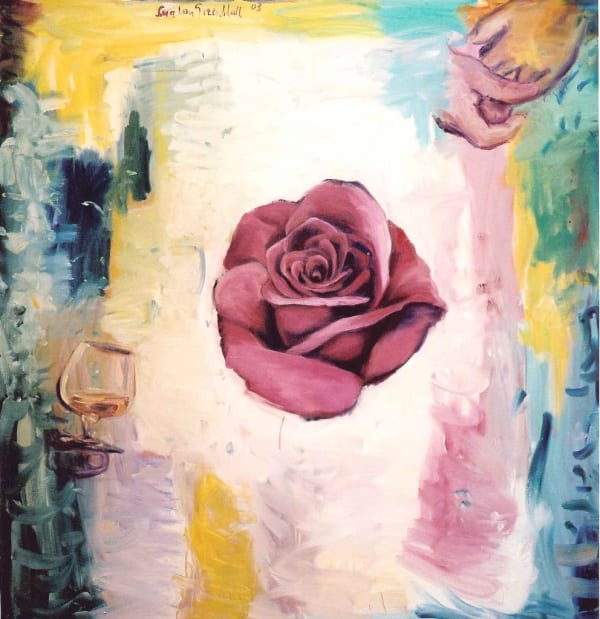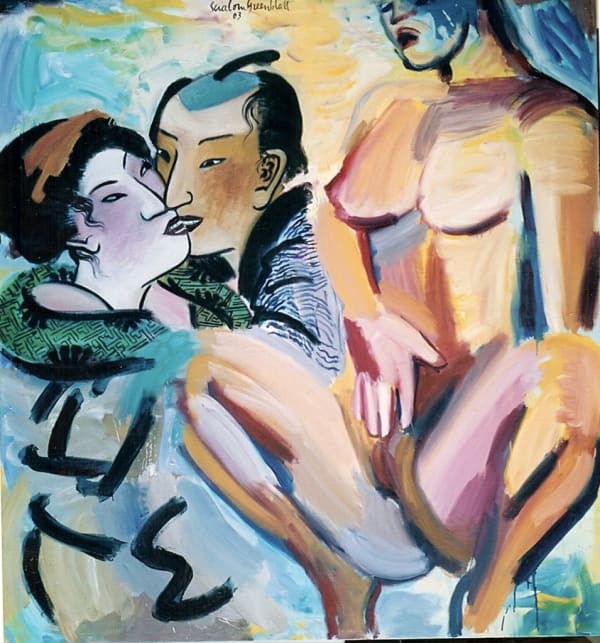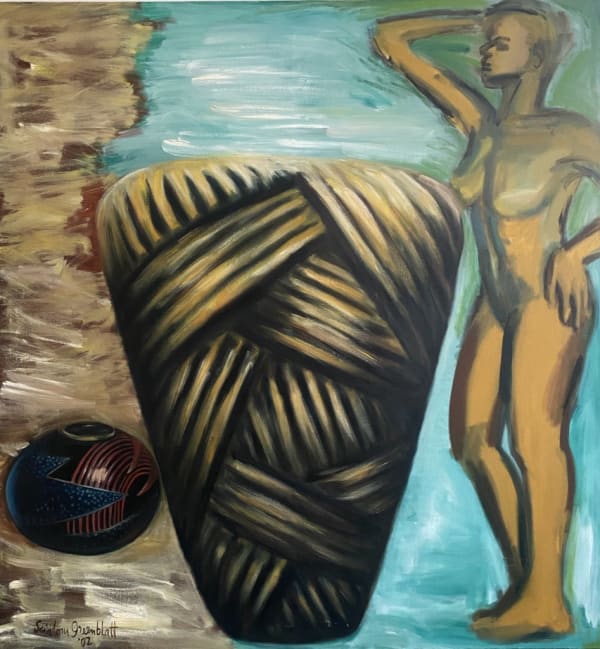‘Across and Down'
Joao Ferreira Gallery. 1999
Continuing her interest in the actual viewing transaction at play between a painting and audience, Francine Scialom Greenblatt here considers language in all its guises and implications.
Linguistically for this artist, there is a loss in translation for many reasons. Paradoxically, the same English joke is not funny in French or Chinese. In an ideal world, song would be in Italian, prayer in chant and curses in Yiddish. Similarly, painting requires a multitude of visual languages to enchant and seduce the viewer.
With this body of work, the artist considered the dynamics of legibility... do we read from left to right? Right to left? Up / down? Do we actually look at alphabets in terms of significance or simply as signifiers of some aesthetic order? If text resonates only when legible as a storyline, what happens when the language is foreign and not understood? How do we process crosswords in Hindi or Russian? Is there a loss and possible anxiety in reading here too?
And so with pictures. We think we can ‘read’ what we see... but in reality, is there a universal language that allows images to be understood? Perhaps that is the joy and challenge for the artist to explore.










